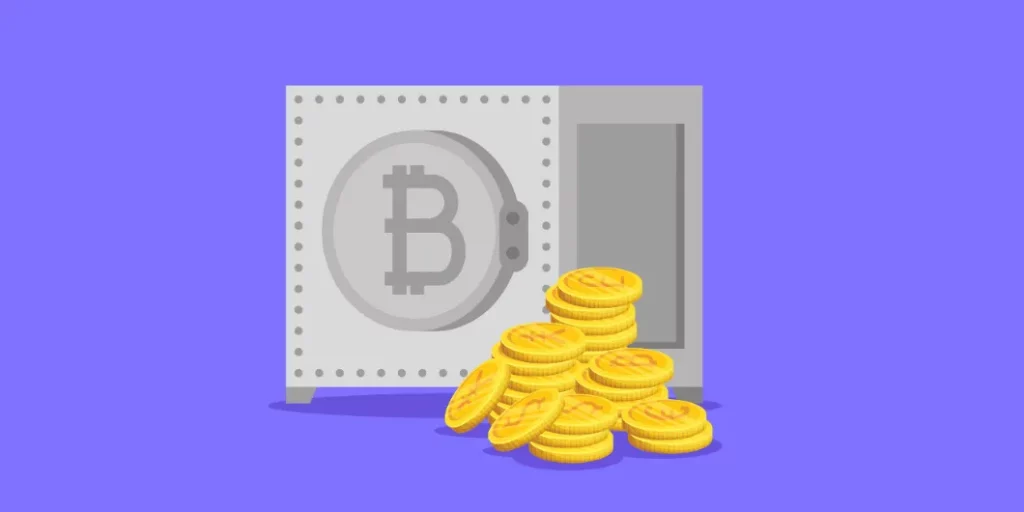
What is a Crypto Reserve? A Simple Guide to Digital Asset Reserves
As digital currencies continue to gain popularity, the concept of crypto reserves is becoming more important. But what exactly is a crypto reserve, and why are institutions and investors looking at it? In this post, we’ll explain what a crypto reserve is and why it matters in today’s financial world.
Understanding Reserves in Traditional Finance
In traditional finance, reserves are assets held by banks or financial institutions to ensure economic stability. Some common types of reserves include:
- Gold reserves: Used for backing currencies in the past.
- Foreign exchange reserves: Used for settling debts between countries.
- Fiat currency reserves: Held by governments to maintain their currency’s value.
These reserves are essential for ensuring liquidity and financial stability. They allow institutions to manage risks and cover short-term needs.
What is a Crypto Reserve?
A crypto reserve is a digital asset held by institutions to support operations or investments. Unlike traditional reserves like gold or fiat currencies, crypto reserves are based on digital currencies like Bitcoin, Ethereum, or Ripple (XRP).
For a crypto reserve to be effective, it needs to meet three key criteria:
- Liquidity: It should be easy to convert into cash or other assets.
- Stability: Its value should be predictable.
- Security: The asset must be well-protected from theft or hacks.
Crypto reserves are different from traditional ones because they are decentralized and not controlled by any government or central authority.
Why Are Crypto Reserves Becoming Popular?
Several reasons explain why crypto reserves are gaining traction:
- Decentralization: Crypto reserves aren’t controlled by central banks, reducing reliance on government systems.
- Borderless Transactions: Cryptocurrencies allow global payments without the need for intermediaries like banks.
- Inflation Hedge: Some cryptocurrencies, like Bitcoin, are seen as a way to protect against inflation and the devaluation of fiat currencies.
- Institutional Adoption: More companies and governments are starting to include crypto in their reserves, further boosting interest.
Types of Crypto Reserves
Here are a few types of digital assets commonly used as reserves:
Bitcoin (BTC) as a Reserve Asset
Bitcoin, often called digital gold, is the most recognized cryptocurrency. Companies like MicroStrategy and Tesla have used Bitcoin as a reserve asset to store value over time.
Stablecoins (USDT, USDC, DAI) as Reserves
Stablecoins are digital currencies pegged to traditional currencies like the U.S. dollar. These are less volatile, making them useful for exchanges and decentralized finance (DeFi) platforms.
Ripple (XRP) and Other Altcoins as Reserves
Ripple (XRP) is another digital currency being explored as a potential reserve asset. With fast transaction times and low fees, XRP is gaining attention from financial institutions. Ethereum is also used in DeFi platforms, making it another candidate for crypto reserves.
Crypto Reserves in Central Banks & Governments
Some countries are already using crypto reserves:
- El Salvador has adopted Bitcoin as legal tender and holds it in reserve.
- Central Bank Digital Currencies (CBDCs): Governments are working on creating digital currencies that could be used as reserves.
However, there are regulatory challenges. Governments are still figuring out how to manage and regulate crypto-backed reserves.
Risks and Challenges of Crypto Reserves
While crypto reserves offer many advantages, there are also risks to consider:
- Volatility: Cryptocurrencies can be highly volatile, making them risky for long-term reserves.
- Regulatory Uncertainty: Governments may impose restrictions on crypto assets, affecting their value and use as reserves.
- Security Risks: Crypto assets need to be secured properly to prevent hacks or theft.
- Liquidity Risks: Some cryptocurrencies may be difficult to convert into traditional money when needed.
The Future of Crypto Reserves
As crypto adoption grows, financial institutions may start using digital assets more frequently in their reserves. The rise of Decentralized Finance (DeFi) and tokenized assets could lead to more efficient financial systems.
For crypto reserves to fully integrate with traditional finance, we’ll need clearer regulations, better security measures, and broader adoption across institutions.
Crypto reserves are becoming a viable option for institutions looking to diversify their financial holdings. They offer benefits like decentralization, faster transactions, and protection from inflation. However, challenges such as volatility, security concerns, and regulatory issues need to be addressed.